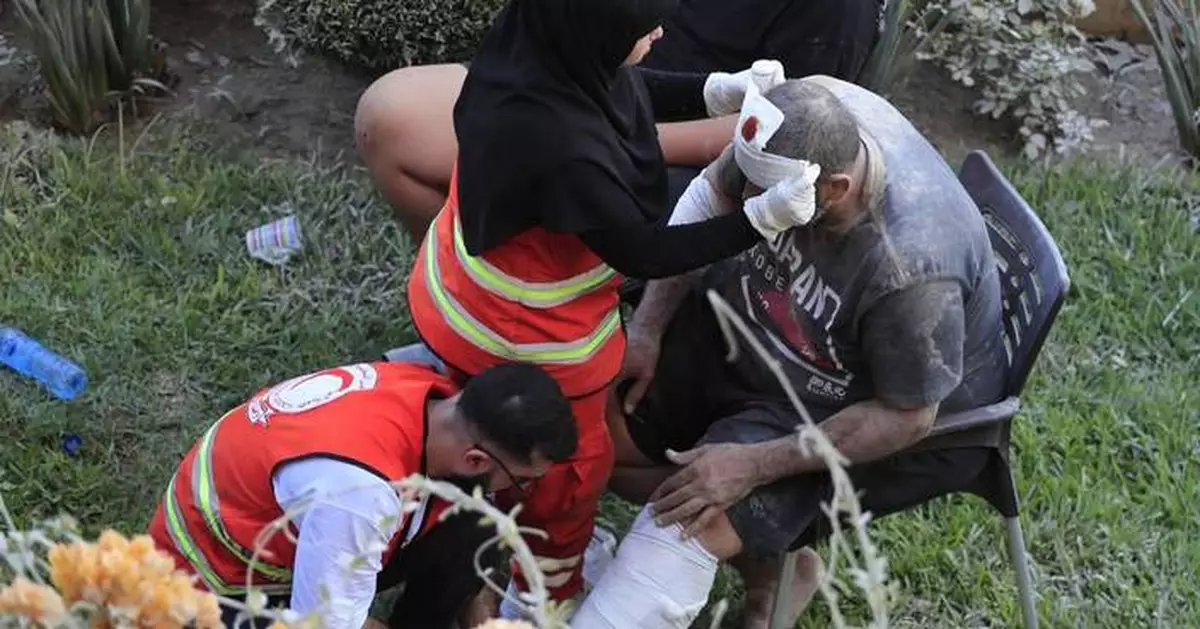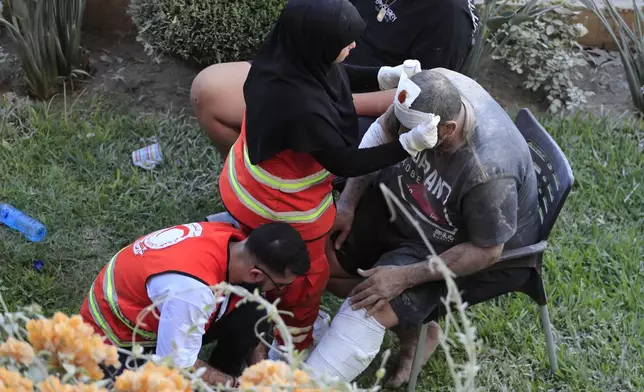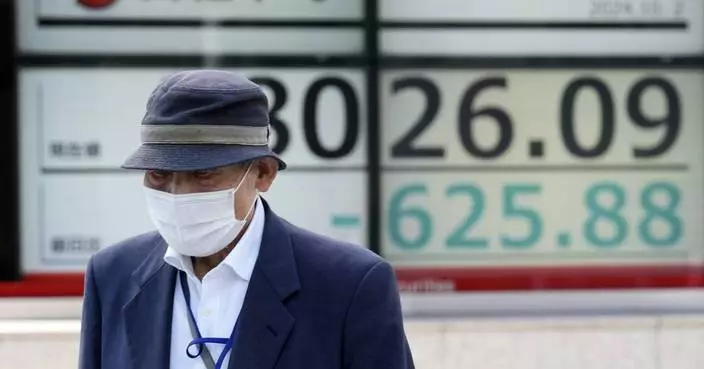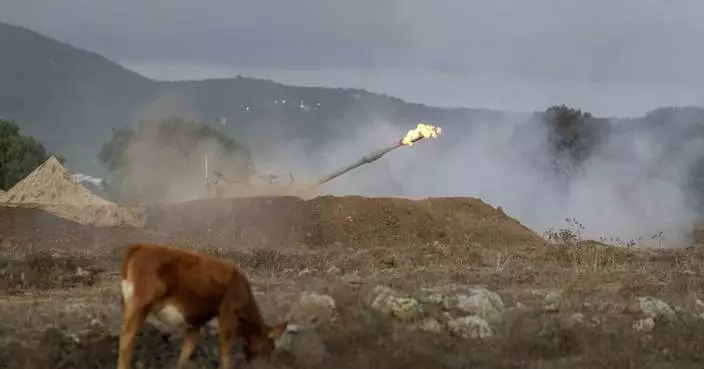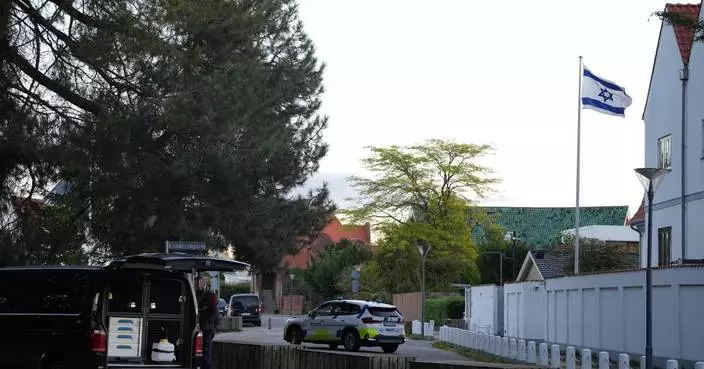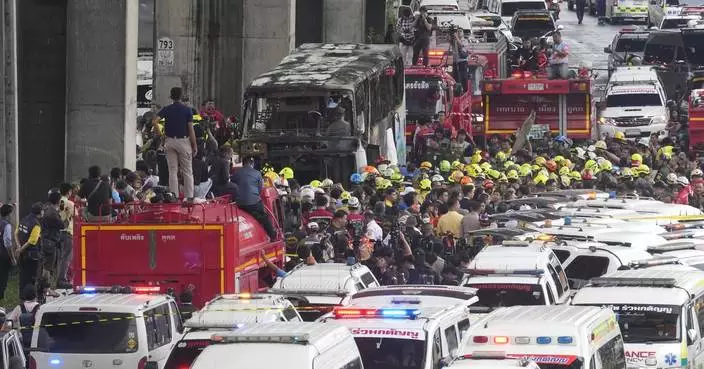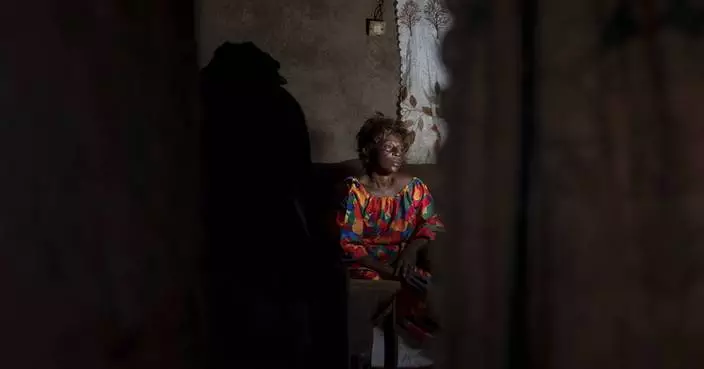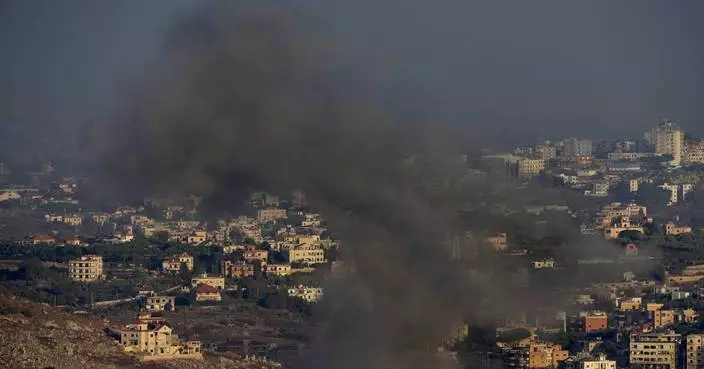BEIRUT (AP) — When Israel bombed buildings outside the southern Lebanese city of Sidon, Mohamed Arkadan and his team rushed to an emergency unlike anything they had ever seen.
About a dozen apartments had collapsed onto the hillside they once overlooked, burying more than 100 people. Even after 17 years with the civil defense forces of one of the world's most war-torn nations, Arkadan was shocked at the destruction. By Monday afternoon — about 24 hours after the bombing — his team had pulled more than 40 bodies, including children's, from the rubble, along with 60 survivors.
Click to Gallery
FILE - Elias Jaradeh, a legislator and an ophthalmologist, left, who has conducted dozens of operation for victims of this week's attack in Lebanon, makes an eye surgery operation for a man who was injured in the explosion of one of the handheld devices, at the Eye Specialist hospital, in Beirut, Lebanon, Friday, Sept. 20, 2024. (AP Photo/Hussein Malla, File)
BEIRUT (AP) — When Israel bombed buildings outside the southern Lebanese city of Sidon, Mohamed Arkadan and his team rushed to an emergency unlike anything they had ever seen.
FILE - Ambulances arrive at the site of an Israeli airstrike in Beirut's southern suburbs Friday, Sept. 27, 2024. (AP Photo/Bilal Hussein, File)
FILE - A wounded girl lies in a hospital bed in the southern village of Saksakieh, Lebanon, Tuesday, Sept. 24, 2024. (AP Photo/Mohammed Zaatari, File)
FILE - Elias Jaradeh, a legislator and an ophthalmologist, left, who has conducted dozens of operation for victims of this week's attack in Lebanon, makes an eye surgery operation for a man who was injured in the explosion of one of the handheld devices, at the Eye Specialist hospital, in Beirut, Lebanon, Friday, Sept. 20, 2024. (AP Photo/Hussein Malla, File)
FILE - Firefighters stand outside a damaged mobile shop after what is believed to be the result of a walkie-talkies exploding inside it, in the southern port city of Sidon, Lebanon, Wednesday, Sept. 18, 2024. (AP Photo/Mohammed Zaatari, File)
FILE - People and rescue teams search for victims after an Israeli airstrike hit two adjacent buildings, in Ain el-Delb neighbourhood east of the southern port city of Sidon, Lebanon, Sunday, Sept. 29, 2024. (AP Photo/Mohammed Zaatari, File)
FILE - Paramedics treat a man who was injured after an Israeli airstrike hit two adjacent buildings east of the southern port city of Sidon, Lebanon, Sunday, Sept. 29, 2024. (AP Photo/Mohammed Zaatari, File)
The children's bodies broke his heart, said Arkadan, 38, but his team of over 30 first responders' inability to help further pained him more. Firetrucks and ambulances haven’t been replaced in years. Rescue tools and equipment are in short supply. His team has to buy their uniforms out of pocket.
An economic crisis that began in 2019 and a massive 2020 port explosion have left Lebanon struggling to provide basic services such as electricity and medical care. Political divisions have left the country of 6 million without a president or functioning government for more than two years, deepening a national sense of abandonment reaching down to the people the country depends on in emergencies.
“We have zero capabilities, zero logistics,” Arkadan said. “We have no gloves, no personal protection gear.”
Israel’s intensified air campaign against Hezbollah has upended the country. Over 1,000 people have been killed in Israeli strikes since Sept. 17, nearly a quarter of them women and children, according to the Health Ministry. Hundreds of thousands of people have fled their homes, sleeping on beaches and streets.
The World Health Organization said over 30 primary health care centers around Lebanon’s affected areas have been closed.
On Tuesday, Israel said it began a limited ground operation against Hezbollah and warned people to evacuate several southern communities, promising further escalation.
Lebanon is “grappling with multiple crises, which have overwhelmed the country’s capacity to cope,” said Imran Riza, the U.N.'s humanitarian coordinator for Lebanon, who said the U.N. had allocated $24 million in emergency funding for people affected by the fighting.
Exhausted medical staff are struggling to cope with the daily influx of new patients. Under government emergency plans, hospitals and medical workers have halted non-urgent operations.
In the southern province of Tyre, many doctors have fled along with residents. In Nabatiyeh, the largest province in southern Lebanon, first responders say they have been working around the clock since last week to reach hundreds of people wounded in bombings that hit dozens of villages and towns, often many on the same day.
After the bombing in Sidon nearly 250 first responders joined Arkadan's team, including a specialized search-and-rescue unit from Beirut, some 45 kilometers (28 miles) to the north. His team didn't have the modern equipment needed to pull people from a disaster.
“We used traditional tools, like scissors, cables, shovels,” Arkadan said.
“Anyone here?” rescuers shouted through the gaps in mounds of rubble, searching for survivors buried deeper underground. One excavator removed the debris slowly, to avoid shaking the heaps of bricks and mangled steel.
Many sought refuge in the ancient city of Tyre, 20 kilometers (12 miles) north of the border with Israel, thinking it was likely to be spared bombardment. More than 8,000 people arrived, said Hassan Dbouk, the head of its disaster management unit.
He said that there were no pre-positioned supplies, such as food parcels, hygiene kits and mattresses, and moving trucks now is fraught with danger. Farmers have been denied access to their land because of the bombings and the municipality is struggling to pay salaries.
Meanwhile, garbage is piling up on the streets. The number of municipal workers has shrunk from 160 to 10.
“The humanitarian situation is catastrophic,” Dbouk said.
Wissam Ghazal, the health ministry official in Tyre, said in one hospital, only five of 35 doctors have remained. In Tyre province, eight medics, including three with a medical organization affiliated with Hezbollah, were killed over two days, he said.
Over the weekend, the city itself became a focus of attacks.
Israeli warplanes struck near the port city’s famed ruins, along its beaches and in residential and commercial areas, forcing thousands of residents to flee. At least 15 civilians were killed Saturday and Sunday, including two municipal workers, a soldier and several children, all but one from two families.
It took rescuers two days to comb through the rubble of a home in the Kharab neighborhood in the city’s center, where a bomb had killed nine members of the al-Samra family.
Six premature babies in incubators around the city were moved to Beirut. The city’s only doctor, who looked after them, couldn’t move between hospitals under fire, Ghazal said.
One of the district’s four hospitals shut after sustaining damage from a strike that affected its electricity supply and damaged the operations room. In two other hospitals, glass windows were broken. For now, the city’s hospitals are receiving more killed than wounded.
“But you don’t know what will happen when the intensity of attacks increases. We will definitely need more.”
Hosein Faqih, head of civil defense in the Nabatiyeh province, said that “we are working in very difficult and critical circumstances because the strikes are random. We have no protection. We have no shields, no helmets, no extra hoses. The newest vehicle is 25 years old. We are still working despite all that.”
At least three of his firefighters’ team were killed in early September. Ten have been injured since then. Of 45 vehicles, six were hit and are now out of service.
Faqih said he is limiting his team’s search-and-rescue missions to residential areas, keeping them away from forests or open areas where they used to put out fires.
“These days, there is something difficult every day. Body parts are everywhere, children, civilians and bodies under rubble,” Faqih said. Still, he said, he considers his job to be the safety net for the people.
“We serve the people, and we will work with what we have.”
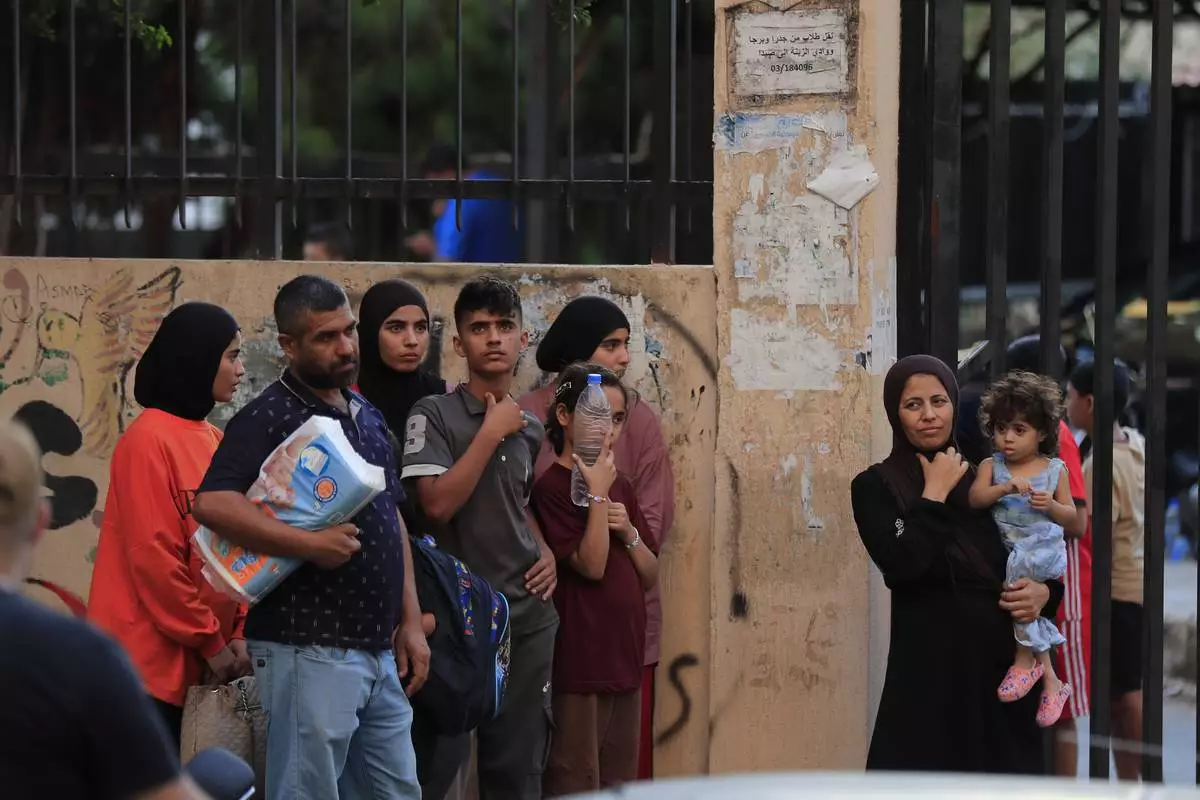
FILE - People fleeing the southern villages amid ongoing Israeli airstrikes, stand outside a school turned into a shelter in Sidon, Monday, Sept. 23, 2024. (AP Photo/Mohammed Zaatari, File)
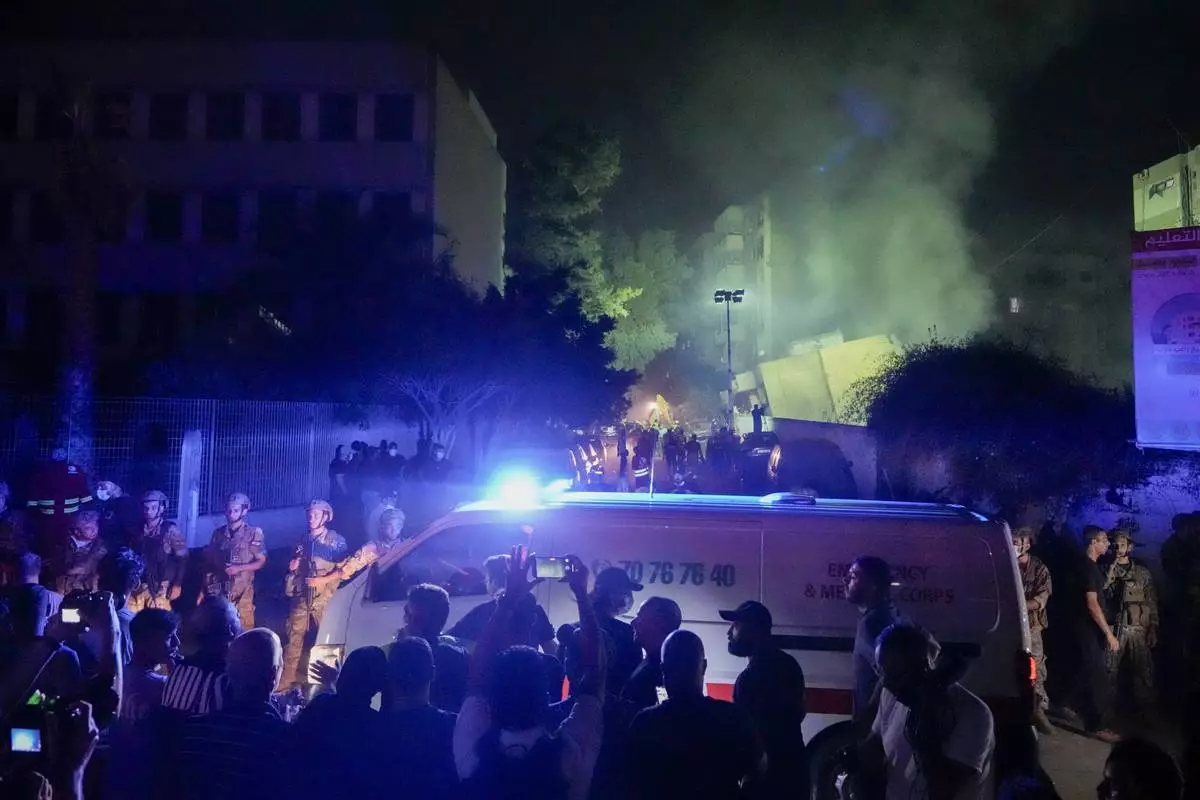
FILE - Ambulances arrive at the site of an Israeli airstrike in Beirut's southern suburbs Friday, Sept. 27, 2024. (AP Photo/Bilal Hussein, File)
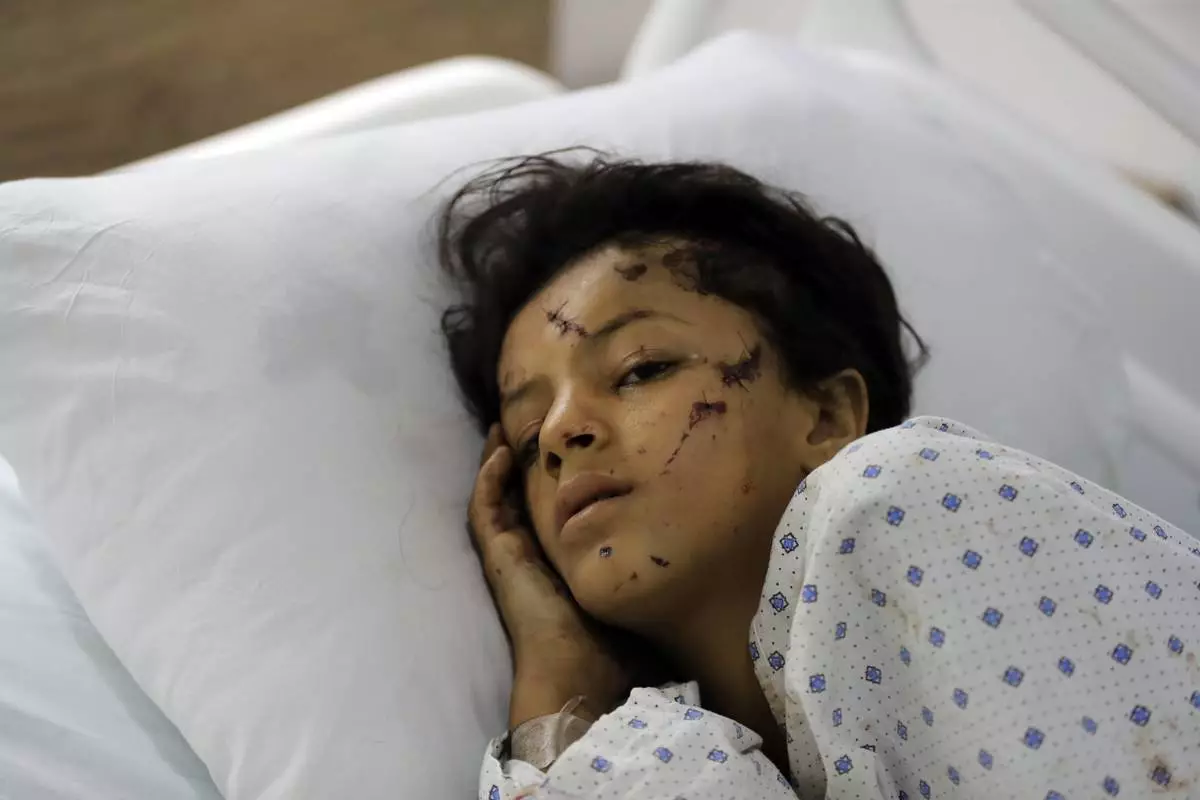
FILE - A wounded girl lies in a hospital bed in the southern village of Saksakieh, Lebanon, Tuesday, Sept. 24, 2024. (AP Photo/Mohammed Zaatari, File)
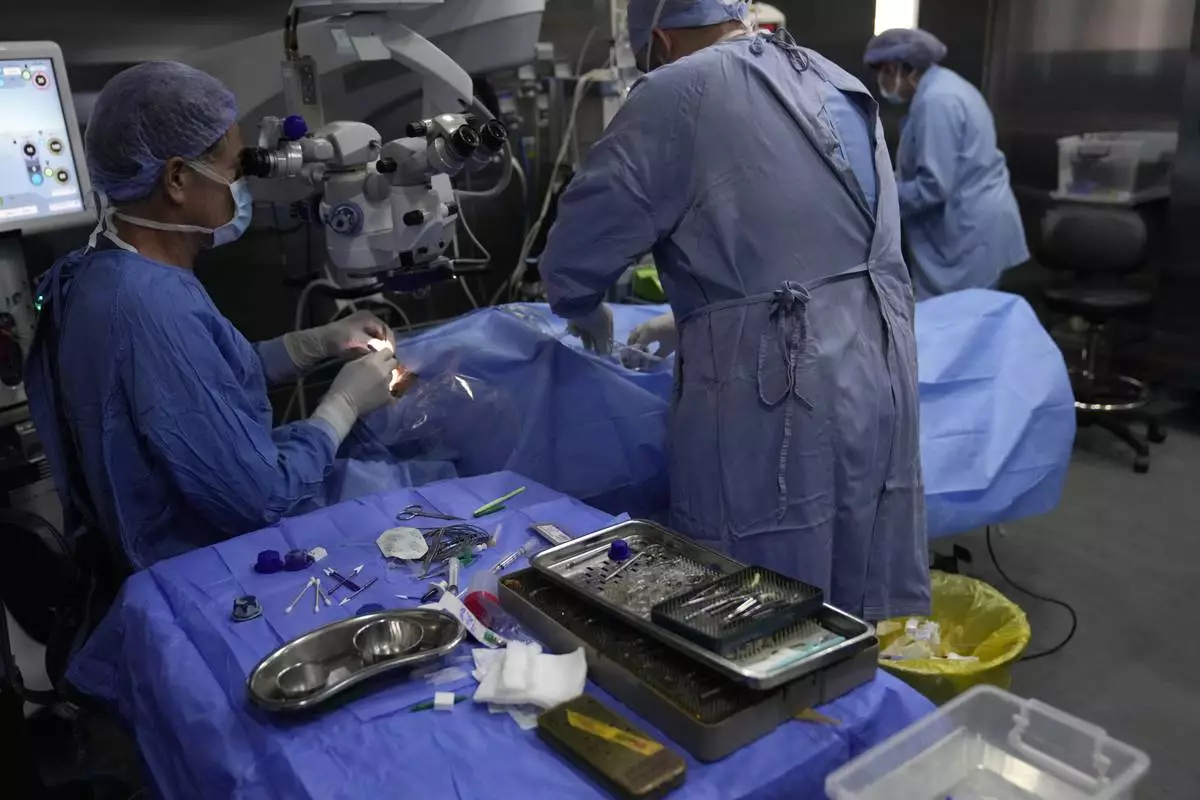
FILE - Elias Jaradeh, a legislator and an ophthalmologist, left, who has conducted dozens of operation for victims of this week's attack in Lebanon, makes an eye surgery operation for a man who was injured in the explosion of one of the handheld devices, at the Eye Specialist hospital, in Beirut, Lebanon, Friday, Sept. 20, 2024. (AP Photo/Hussein Malla, File)
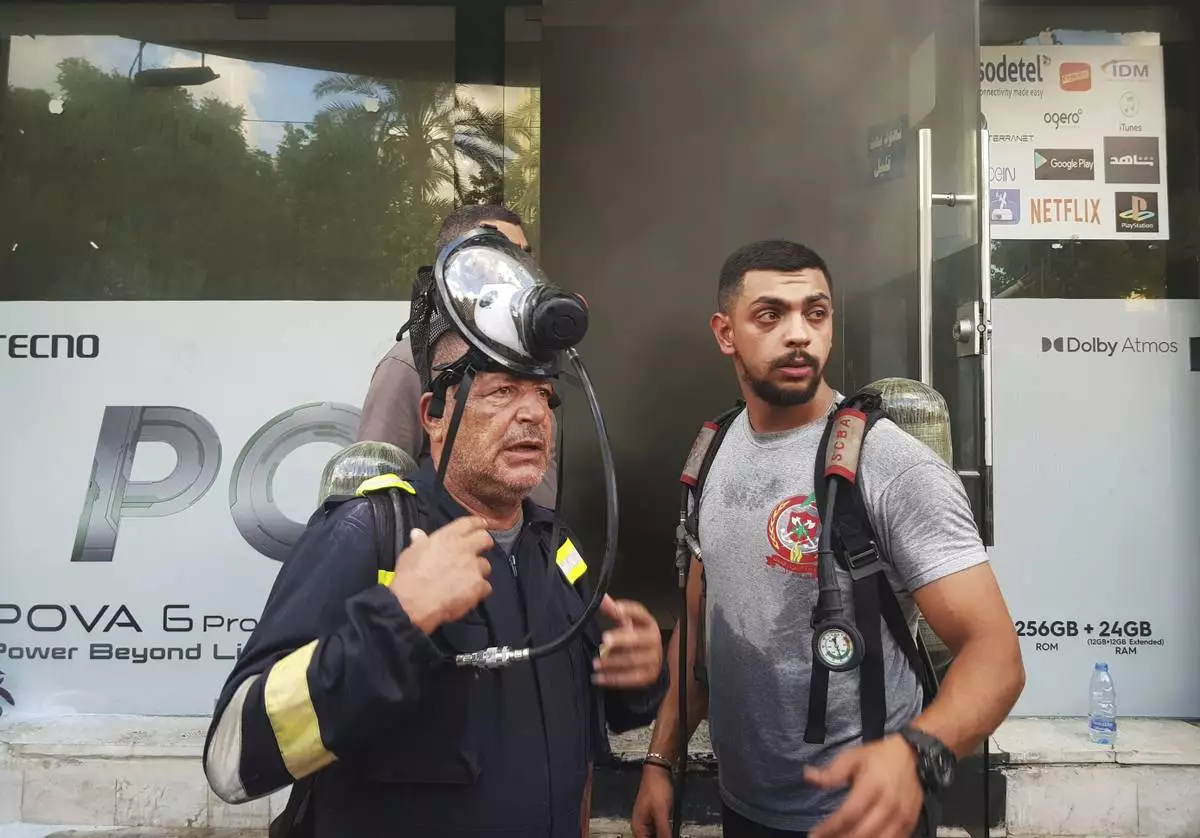
FILE - Firefighters stand outside a damaged mobile shop after what is believed to be the result of a walkie-talkies exploding inside it, in the southern port city of Sidon, Lebanon, Wednesday, Sept. 18, 2024. (AP Photo/Mohammed Zaatari, File)
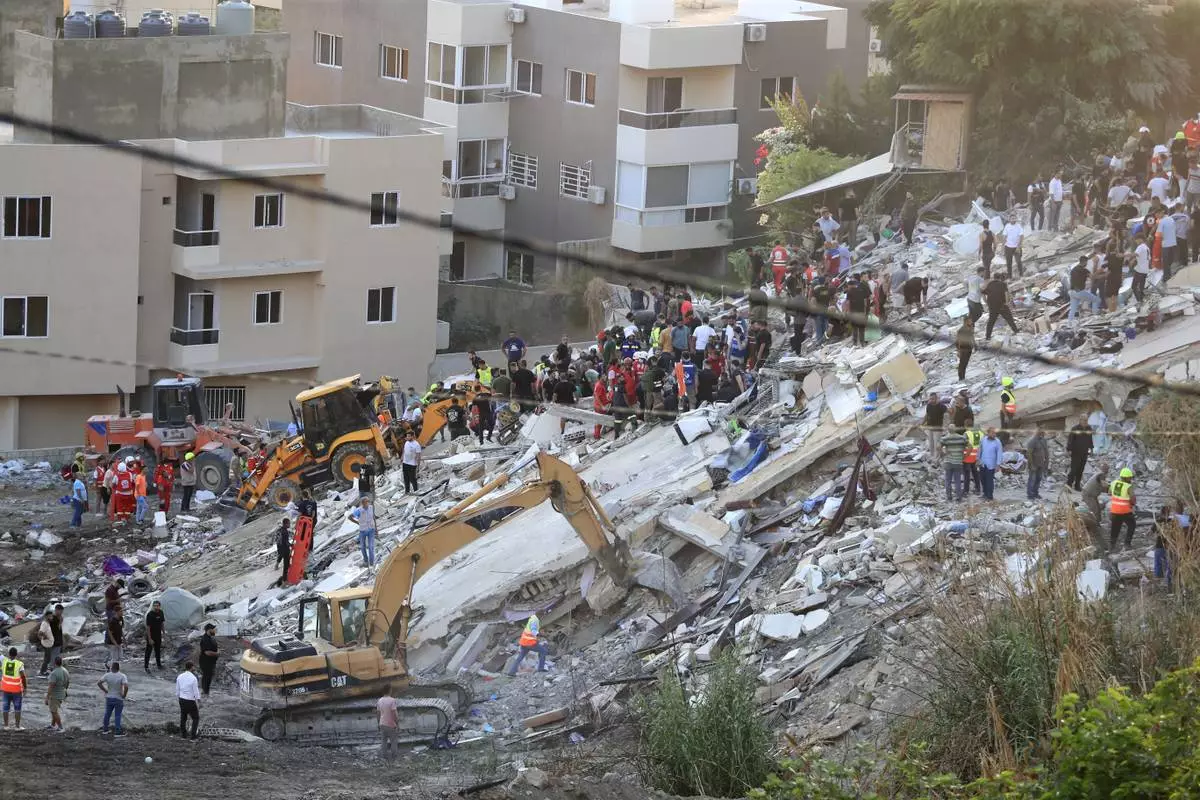
FILE - People and rescue teams search for victims after an Israeli airstrike hit two adjacent buildings, in Ain el-Delb neighbourhood east of the southern port city of Sidon, Lebanon, Sunday, Sept. 29, 2024. (AP Photo/Mohammed Zaatari, File)

FILE - Paramedics treat a man who was injured after an Israeli airstrike hit two adjacent buildings east of the southern port city of Sidon, Lebanon, Sunday, Sept. 29, 2024. (AP Photo/Mohammed Zaatari, File)
ROME (AP) — Pope Francis opened the second phase of his big Catholic reform project Wednesday, with widespread calls for women to take up more positions of responsibility in the church topping the agenda but ordained ministry still ruled out.
Francis presided over an opening Mass in St. Peter’s Square with the 368 bishops and laypeople who will meet behind closed doors for the next three weeks to discuss the future of the church and how to make it more responsive to the needs of Catholics today.
Several of the most contentious issues are officially off the table, after they encountered resistance and objections during the first session of the synod, or meeting, last year. They include ministering to LGBTQ+ Catholics and allowing women to serve as deacons.
Francis has entrusted these topics to 10 study groups that are working in parallel to the synod, raising questions about what exactly will come out of the gathering when it concludes Oct. 26 with a final set of proposals for Francis to consider.
Francis launched the reform process in 2021 to put in practice his goal of creating a church that is more inclusive, humble and welcoming, where ordinary Catholics have a greater say in decision making than the all-male priestly hierarchy.
The process, and the two-year canvassing of rank-and-file Catholics that informed it, sparked both hopes and fears that real change was afoot.
In his marching orders Wednesday, Francis urged delegates to leave aside their long-held and self-interested positions and truly listen to one another to “give life to something new.”
“Otherwise, we will end up locking ourselves into dialogues among the deaf, where participants seek to advance their own causes or agendas without listening to others and, above all, without listening to the voice of the Lord,” he said in his homily.
The first phase of the synod process ended last year by concluding it was “urgent” to guarantee fuller participation by women in church governance positions, and calling for theological and pastoral research to continue about allowing women to be deacons.
Deacons perform many of the same functions as priests, such as presiding over baptisms, weddings and funerals, but they cannot celebrate Mass.
Advocates say allowing women to be deacons would help offset the Catholic priest shortage and address longstanding complaints that women have a second-class status in the church: barred from the priesthood yet responsible for the lion’s share of the work educating the young, caring for the sick and passing the faith onto next generations.
Opponents say ordaining women to the deaconate would signal the start of a slippery slope toward ordaining women to the priesthood. The Catholic Church reserves the priesthood for men, saying Christ chose only men as his 12 apostles.
Francis has repeatedly reaffirmed the all-male priesthood and as recently as this weekend sharply criticized “obtuse” agitators pressing for a female diaconate. After a contentious visit to Belgium where he was challenged by female students, Francis said such calls were an attempt to “make women masculine.”
His arguments have outraged proponents of women’s ordination, who have organized a series of events outside the synod this month in Rome to press their case.
“It’s so insulting to keep on saying that the only valid role that will get the approval of this pope is to be nurturing, is to be a mother, while you can be nurturing and mothering and be a priest,” said Miriam Duignan, a trustee at the Wijngaards Institute for Catholic Research.
“He is putting a spiritual stamp of approval on sexism,” she said at a prayer event this week co-organized by the Women’s Ordination Conference. “It is so irresponsible and dangerous for him to constantly criticize, belittle, dismiss and demonize women who are just saying ‘Stop lying. Stop hiding and stop trying to relegate us to second-class citizenship.’”
While ordained ministry for women is out of the question, a host of other proposals are being discussed, including calls for women to have greater positions of responsibility in seminaries and sit as judges on canonical courts that decide everything from marriage annulments to priest discipline cases.
There are 368 members of the synod, including 272 bishops and 96 non-bishops. In all, 85 women are participating, including 54 with the right to vote.
In addition to delegates who were selected by their respective bishops conferences, Francis named a few members himself to participate, including two bishops from mainland China, many of his closest cardinal advisers and the exiled Nicaraguan Bishop Rolando Jose Alvarez.
Also on the list of pontifically nominated members is the retired prefect of the Vatican’s doctrine office, Cardinal Gerhard Mueller, who has been critical of the synod process and Francis’ pontificate as a whole.
In an essay this week on German Catholic site kath.net, Mueller took particular aim at the penitential liturgy that Francis celebrated Tuesday during which he begged forgiveness for a host of sins as a way to atone for the church’s transgressions before the start of the meeting.
Mueller blasted what he called “newly invented sins” -– including sins against the synod itself and the sin “of using doctrine as stones to be hurled,” a reference to how conservatives have criticized Francis’ reform efforts as undermining traditional church doctrine.
Mueller said such a laundry list of invented sins “reads like a checklist of woke and gender ideology, somewhat laboriously disguised as Christianity.”
Non-bishop members named by the pope include the Rev. James Martin, an American Jesuit who runs an LGBTQ+ outreach ministry. Martin has a sympathetic ear in both Francis, who approved same-sex blessings unilaterally after the first session of the synod ended, and the Rev. Timothy Radcliffe, who is one of the “spiritual assistants” for the synod.
In an essay this week in the Vatican newspaper L’Osservatore Romano, Radcliffe argued strongly for even doubters in the church to recognize the good in LGBTQ+ Catholics and their relationships, and why the church ought to welcome them.
“The acceptance of gay people is seen in some parts of the church as evidence of Western decadence,” he wrote. “But the church must fight for the lives and dignity of gay people, still liable to capital punishment in 10 countries and criminal prosecution in 70. They have the right to live,” he said.
At the same time, those opposed to a pastoral approach to gays have gifts the Western church should appreciate, including a deep sense of the divine life in all of creation, he said.
“The Body of Christ needs all our gifts,” he concluded.
AP visual journalist Silvia Stellacci contributed to this report.
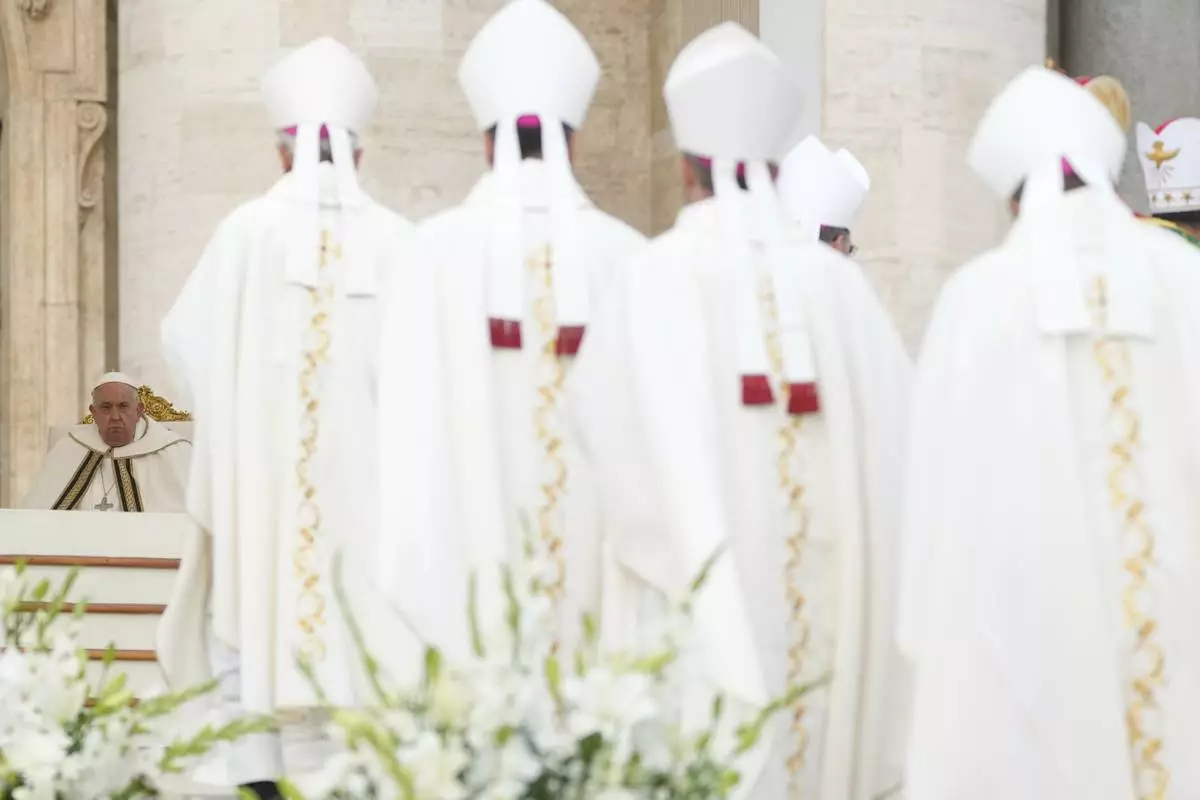
Pope Francis presides over a mass in St. Peter's Square, at the Vatican, for the opening of the second session of the 16th General Assembly of the Synod of Bishops, Wednesday, Oct. 2, 2024. (AP Photo/Gregorio Borgia)
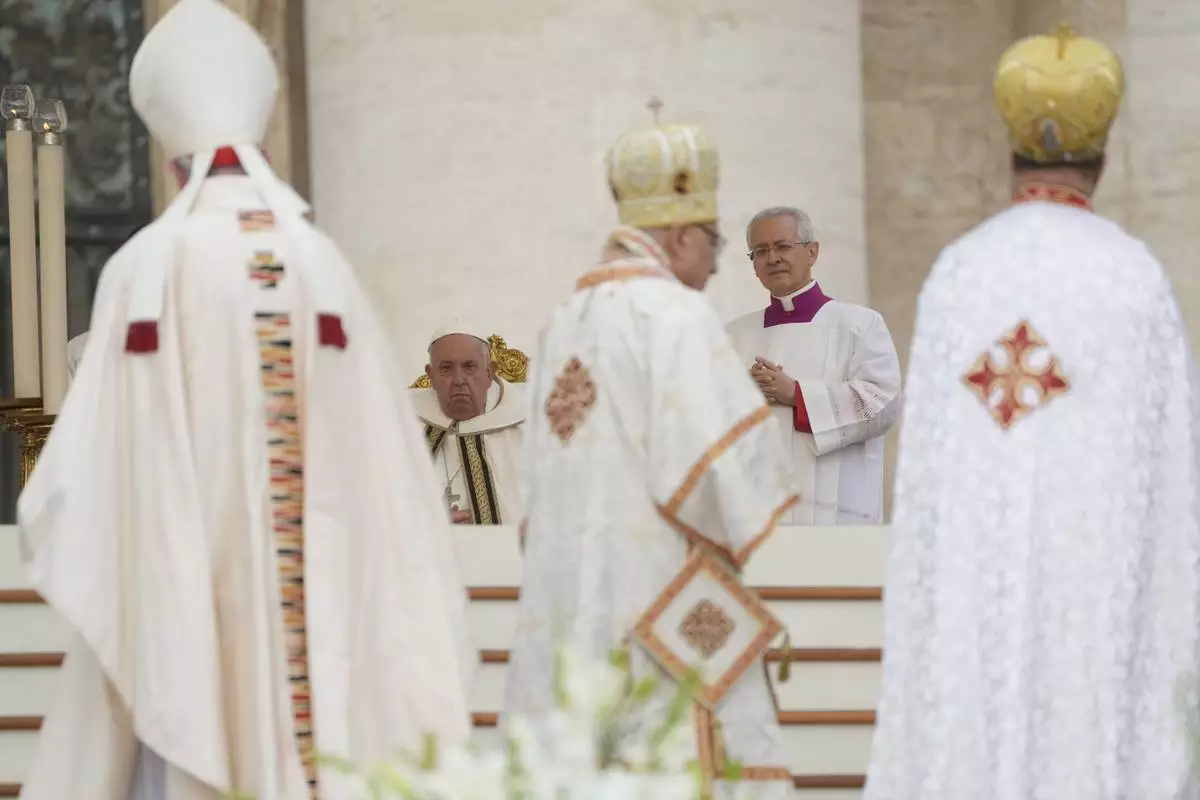
Pope Francis presides over a mass in St. Peter's Square, at the Vatican, for the opening of the second session of the 16th General Assembly of the Synod of Bishops, Wednesday, Oct. 2, 2024. (AP Photo/Gregorio Borgia)
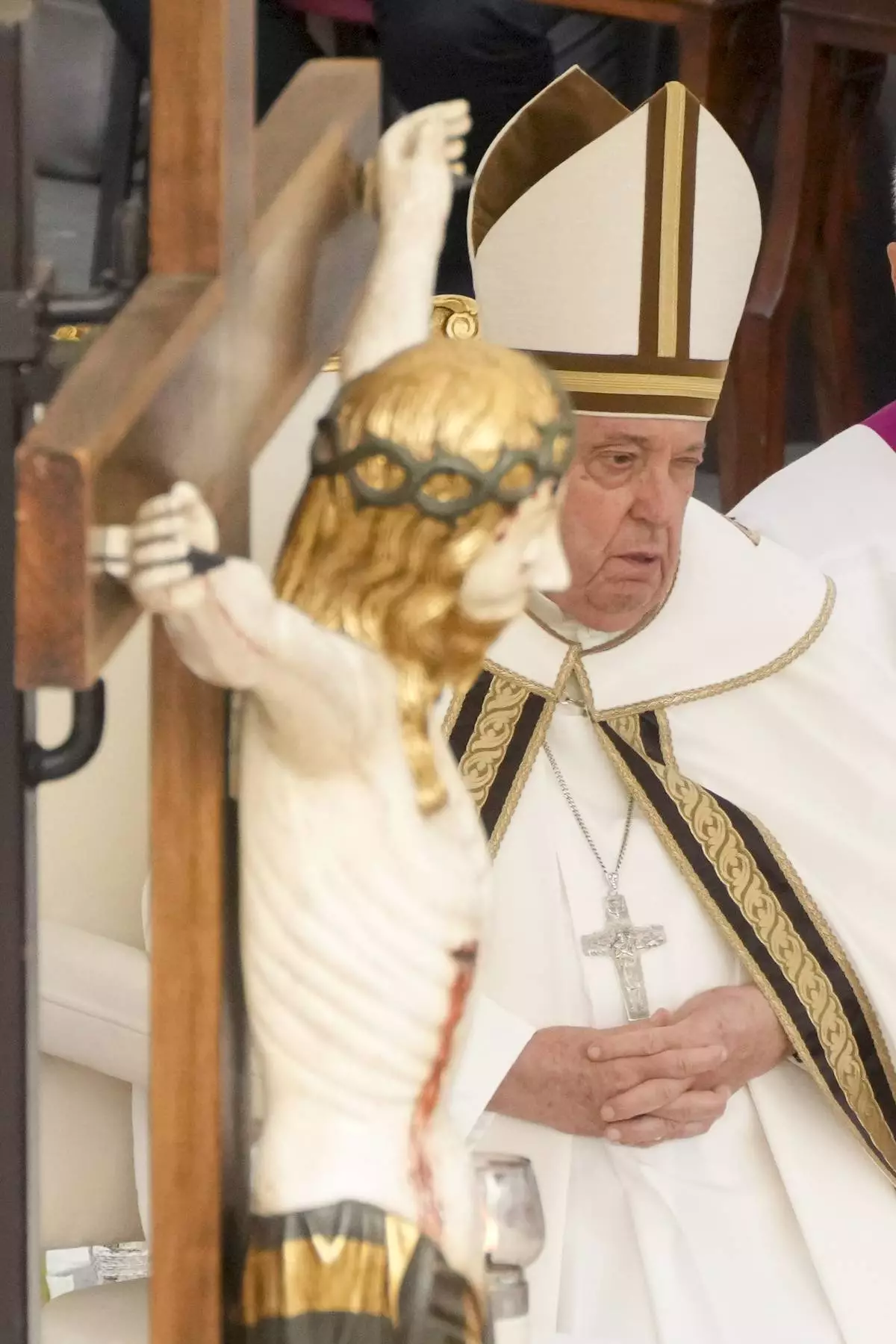
Pope Francis presides over a mass in St. Peter's Square, at the Vatican, for the opening of the second session of the 16th General Assembly of the Synod of Bishops, Wednesday, Oct. 2, 2024. (AP Photo/Gregorio Borgia)
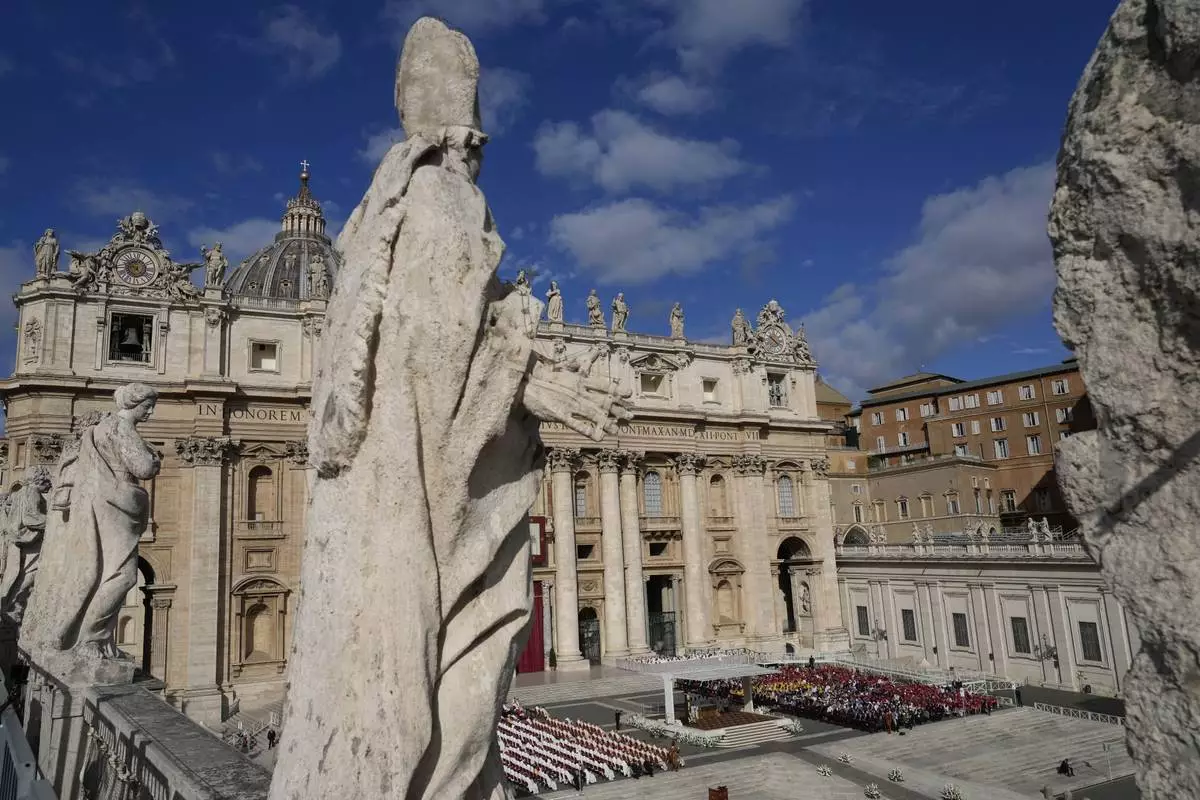
A view of St. Peter's Square as Pope Francis presides over a mass at the Vatican, for the opening of the second session of the 16th General Assembly of the Synod of Bishops, Wednesday, Oct. 2, 2024. (AP Photo/Gregorio Borgia)
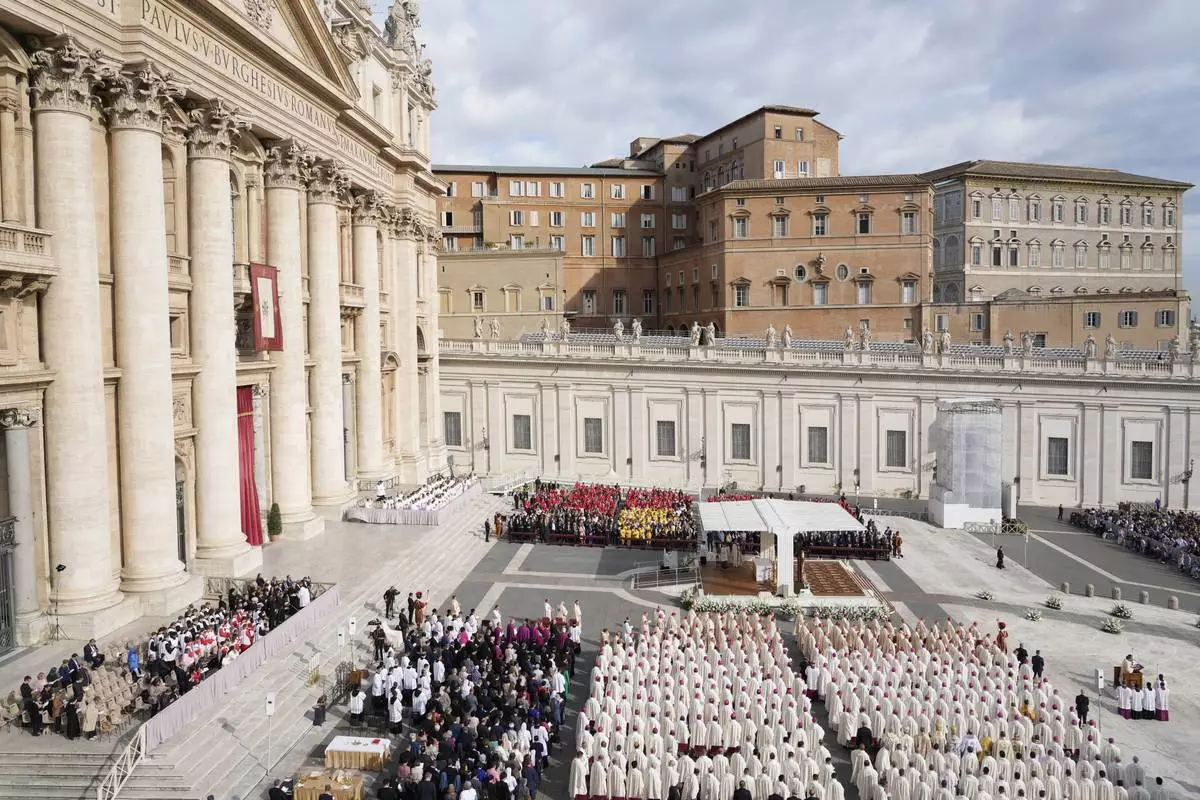
A view of St. Peter's Square as Pope Francis presides over a mass at the Vatican, for the opening of the second session of the 16th General Assembly of the Synod of Bishops, Wednesday, Oct. 2, 2024. (AP Photo/Gregorio Borgia)
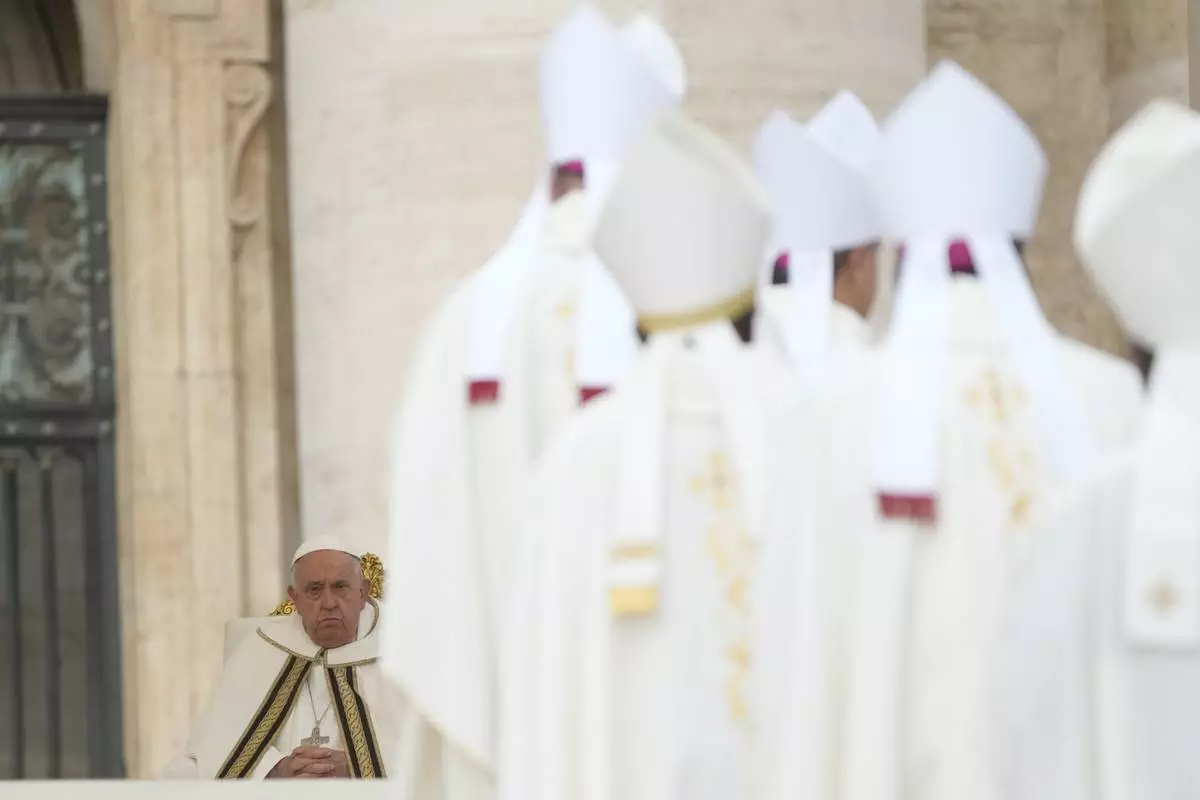
Pope Francis presides over a mass in St. Peter's Square, at the Vatican, for the opening of the second session of the 16th General Assembly of the Synod of Bishops, Wednesday, Oct. 2, 2024. (AP Photo/Gregorio Borgia)
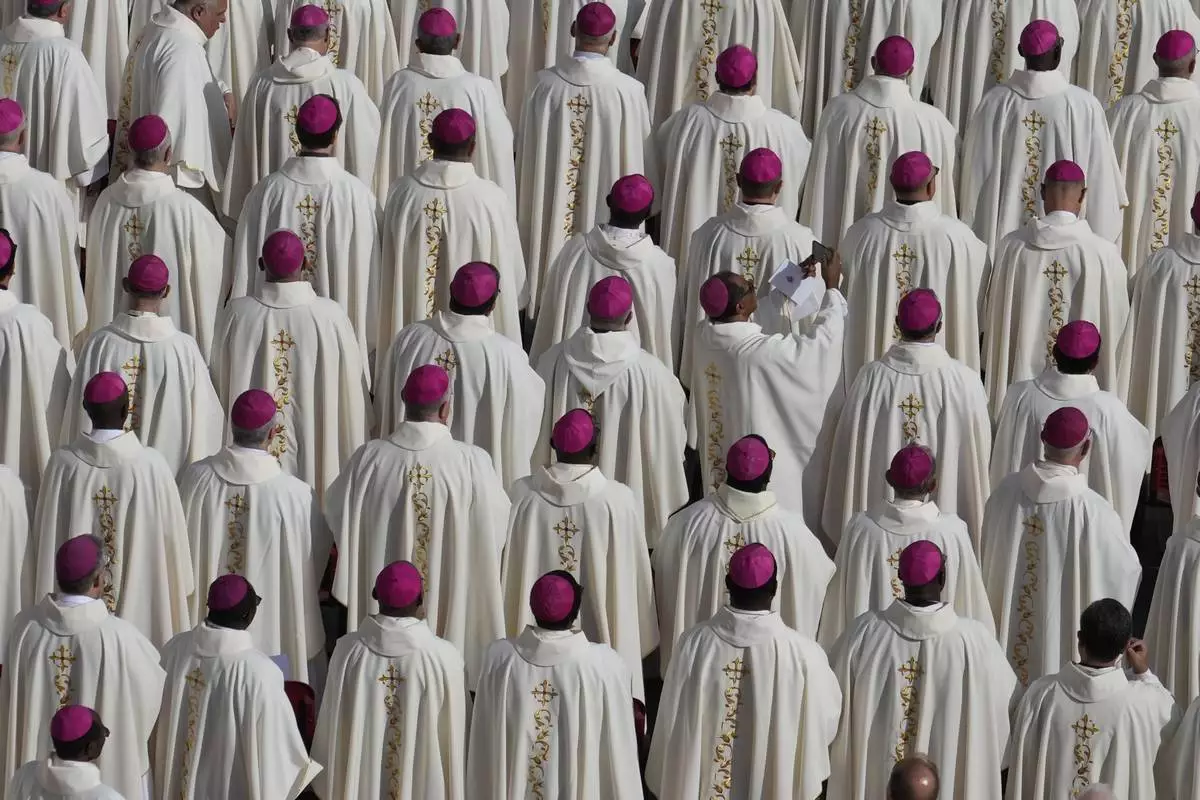
A bishop uses a smartphone as Pope Francis presides over a mass in St. Peter's Square, at the Vatican, for the opening of the second session of the 16th General Assembly of the Synod of Bishops, Wednesday, Oct. 2, 2024. (AP Photo/Gregorio Borgia)
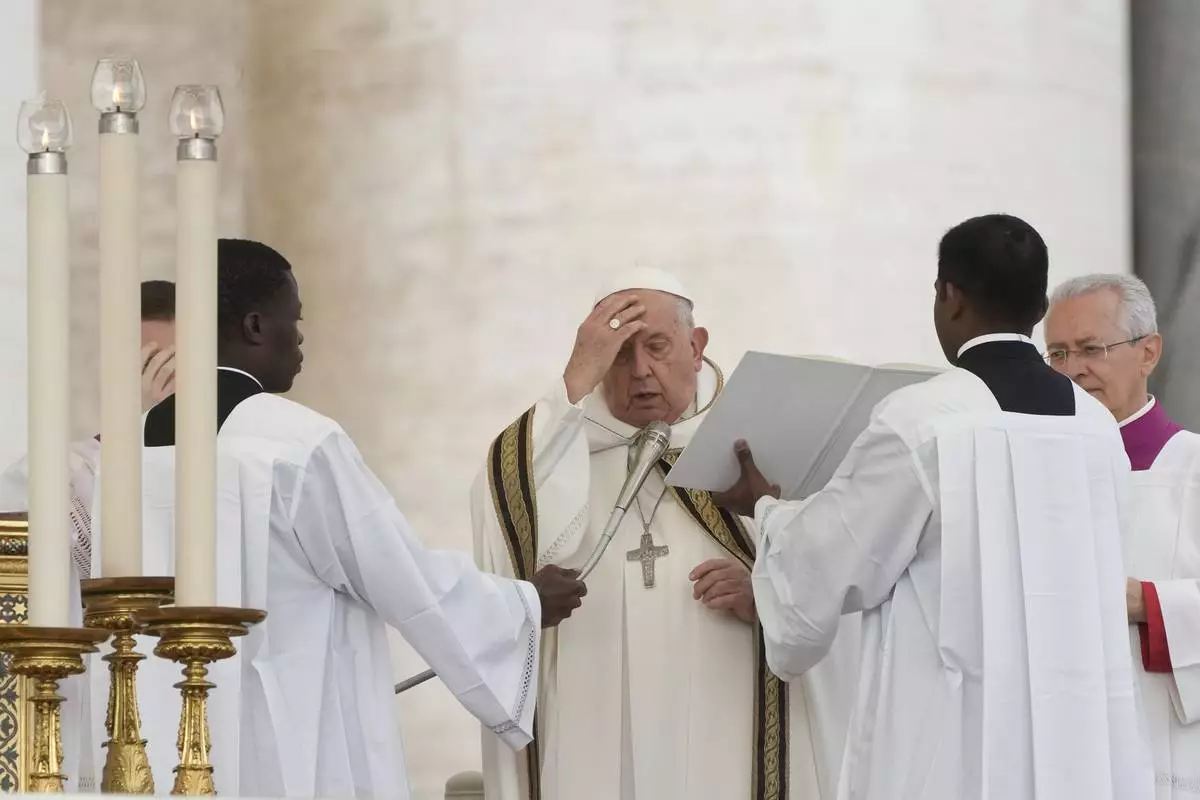
Pope Francis presides over a mass in St. Peter's Square, at the Vatican, for the opening of the second session of the 16th General Assembly of the Synod of Bishops, Wednesday, Oct. 2, 2024. (AP Photo/Gregorio Borgia)









